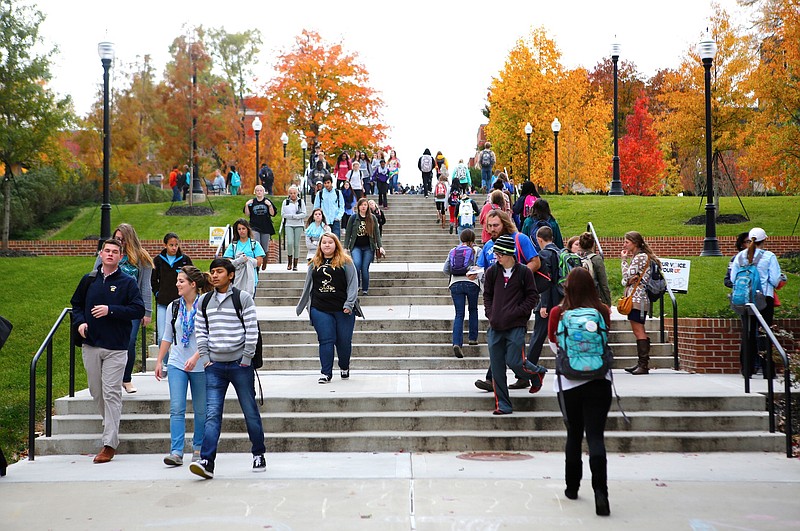College kids are hungry.
And we're not just talking the midnight munchies. No, we're talking about that "it's 10 a.m.-and-my-stomach-is-growling" kind of hunger.
I noticed this while teaching a writing class at a local university this spring. Two or three times during the semester I brought doughnuts or bagels and cream cheese to my midmorning class. Immediately, I noticed that the kids were effusively thankful for the prenoon nosh. But I also discovered that any leftovers were carefully wrapped in paper napkins and tucked inside their backpacks for later.
It hit me that these were more than mere between-meal snacks. In some cases, the baked goods represented breakfast or lunch.
This week a New York Times article quoted from a recent Temple University study. The study, produced by Temple's Hope Center for College Community and Justice, surveyed 100 institutions and discovered that 47 percent of college students said they had felt "food insecurity" in the previous 30 days. Food insecurity, as the term is used here, is a euphemism for hunger.
Embedded in the study was another interesting fact: About 57 percent of students who were eligible for food stamps didn't collect them, according to the General Accounting Office. Perhaps they didn't know or were embarrassed to ask.
With the cost of college at an all-time high, it seems that food expenses - or at least square meals - are where students often pare back expenses. Maybe their loan money runs out before they can go to Food City, or perhaps they simply can't afford meal plans.
Even though I'll be 61 years old later this month, I still remember college austerity. To splurge when we got our scholarship checks, my roommate and I would go buy cheap steaks at the supermarket. I even remember the cut: savoy broil. But I never remember being truly hungry. There's a big difference between bad steaks and an empty stomach.
The Temple report concludes, "Food and housing insecurity undermine academic success." So not only are college students going without food, it's hurting their studies, too. Any way you cut it, hunger and learning are incompatible.
With one teenage boy and one preteen at home, I am familiar with the eating habits of young males. For them, life is just one long meal punctuated by YouTube videos. At any given moment they will tell you they are "starving hungry."
Sometimes, I feel like a busboy in my own home, carrying tumblers and dishes from the family room to the kitchen. Grocery shopping and dishwashing are two of my main duties at home, and sometimes it seems that the process of feeding two children is never-ending.
View other columns by Mark Kennedy
I get that for some young people, around-the-clock hunger is a phase. But I feel like this food insecurity on college campuses is more dire. Many of today's college students got free or reduced-price lunches during their K-12 years. In fact, the U.S. Department of Agriculture reports that in one recent school year, "United States school cafeterias served over 5 billion lunches, with nearly three-quarters of the lunches free or at a reduced price."
But college students have access to grants and loans to help pay for their meals, you say. I know. But there is a disconnect somewhere if almost half of college kids feel insecure about food. Being around the students, it seems like they are always in scavenger mode.
As world problems go, hunger on U.S. college campuses may seem like a low priority.
Just be aware that the next time you are tempted to call a college student a "snowflake," that's a pretty cold thing to call a hungry kid.
Contact Mark Kennedy at mkennedy@timesfreepress.com or 423-757-6645.

